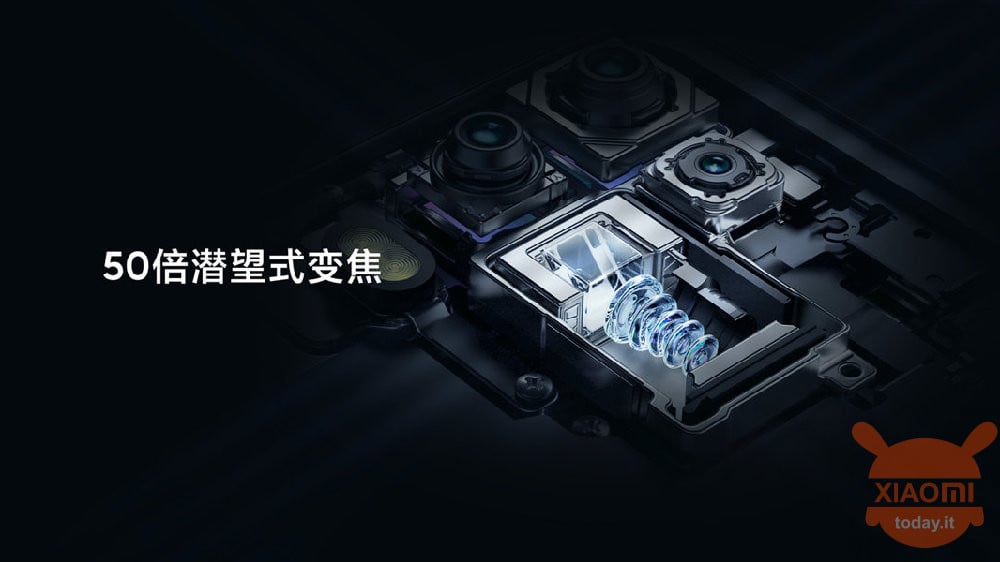
On April 27, Xiaomi presented the new Mi 10 Youth Edition, the cheapest smartphone of the Mi 10 series dedicated to young people (in China). The device adopts a photographic sector of all respect, with a total of four cameras, including the main 48MP, an 8MP telephoto, an ultra wide 8MP lens and a 2MP macro, to cover a focal length ranging from 15mm at 122mm. Of the four as sensors, the 8MP telephoto one is the most interesting of all as it adopts a periscope structure, to obtain an optical zoom of up to 5 without loss of quality and a digital zoom of up to 50x.
Xiaomi Mi 10 Youth Edition: This is how the 5x periscope lens works
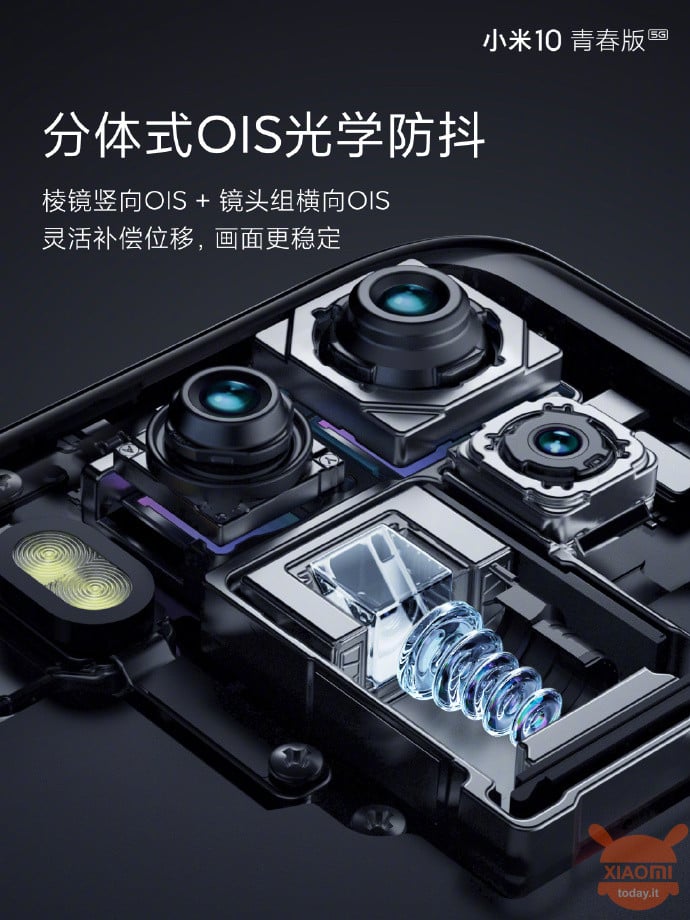
As we well know, the structure of the periscope lens is relatively complex and is generally used only for top models. But this time Xiaomi has decided to bring this technology to the Xiaomi Mi 10 Youth Edition which in China costs only 2099 yuan (270 €).
Why use a periscope lens? Exceeds the limit of conventional 3X optical zoom.
Telephoto lenses are now not uncommon in today's smartphones. Most devices with three or four cameras are equipped with a telephoto lens for photos or shooting without loss of detail. But in terms of zoom magnification, 3X is the limit.
So how do you zoom in? Well, the greater the focal length of the lens, the greater the magnification, i.e. it is possible to shoot further. But to achieve a longer focal length, the lens must also be "longer".
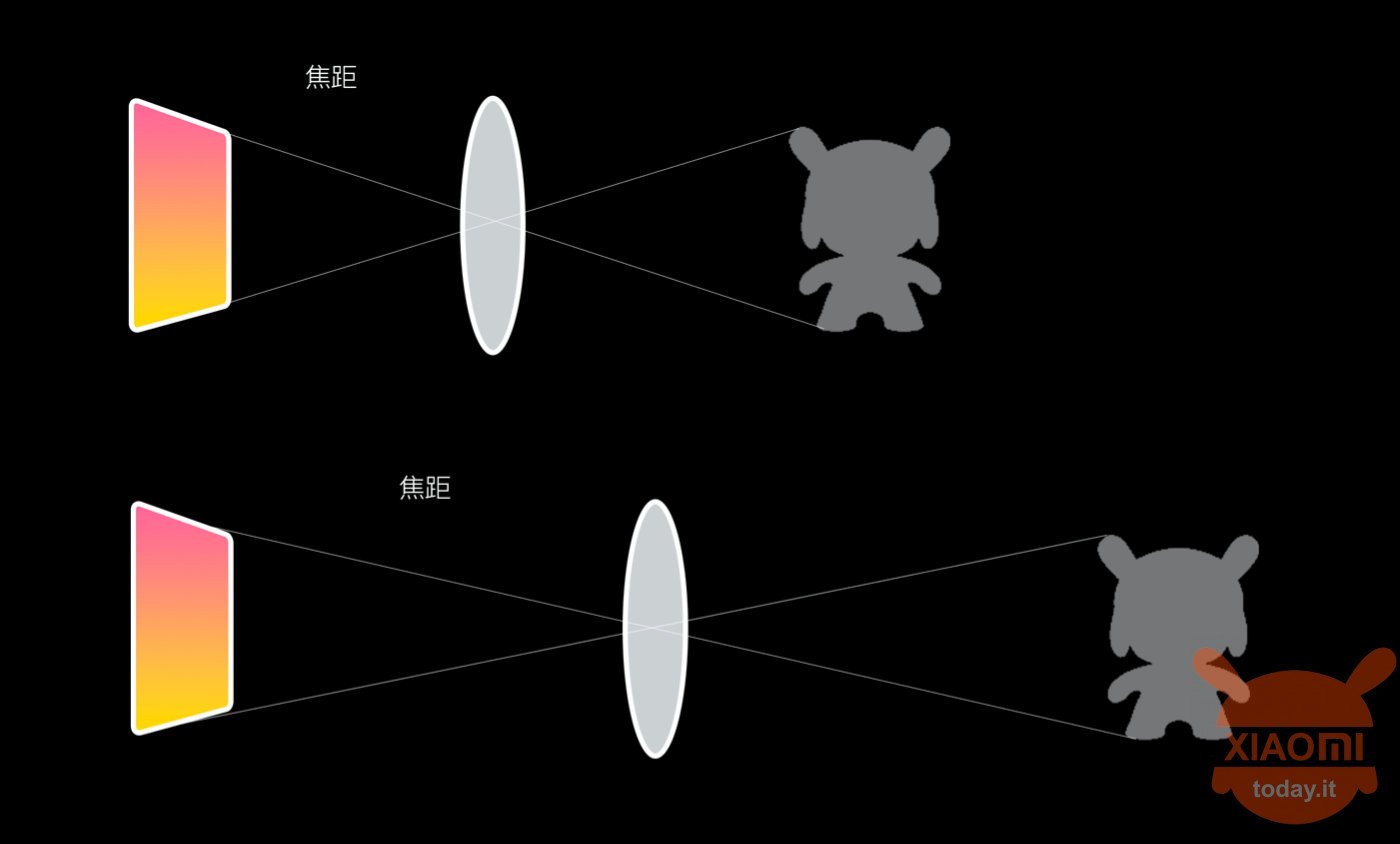
This above is a diagram showing the focal length and shooting distance (the current group of lenses is much more complicated than the image above). To achieve a higher magnification zoom, the distance between the lens and the CMOS sensor will also be longer, which means the camera module will be thicker. This is how the idea of a periscope lens was born.
How is the periscopic lens implemented? Right angle prisms change the direction of the light path so that the mirror can be positioned horizontally
Obviously when we say periscope, the first thing that comes to mind is the periscope we saw in submarines. The periscope lens of the smartphone is based on the same structure.
▲ Peripheral view of the structure
The combined periscope lens of the Mi 10 Youth Edition includes a right angle prism that changes the direction of the optical path and a set of 5P aspherical lenses for imaging. This right angle prism is one of the key functions.
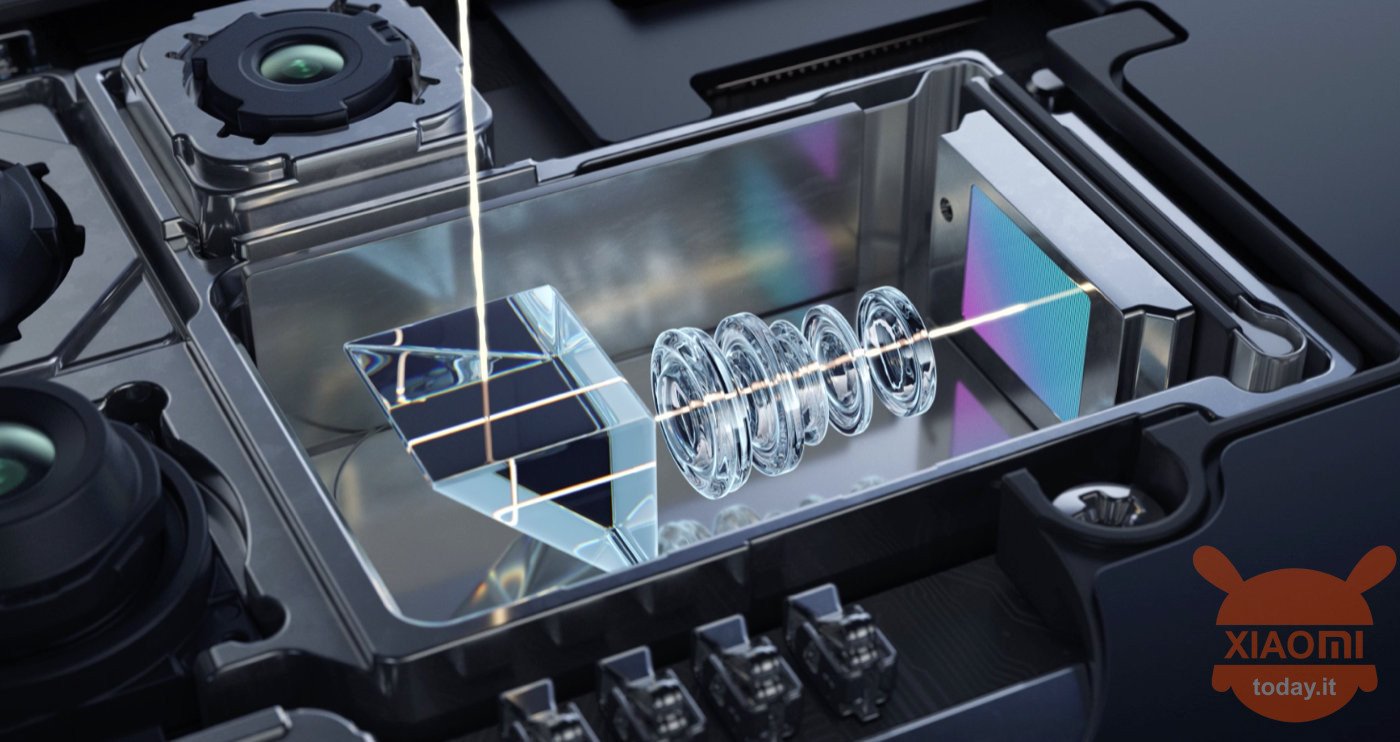
After a refraction, the light changes its path, passes through the 5P lens and finally enters the CMOS sensor for imaging. There are dozens of processing techniques for right angle prisms to accurately refract the light in the image sensor. Its cost is relatively high, which is also the main reason why the periscope lens is generally used only for flagship devices.
How important is telephoto stabilization? The Split OIS control system prevents even the slightest deflection of the image.
Anti-vibration optical technology is relatively popular in high-end smartphones. Its principle is to use the reverse movement of a group of lenses or photosensitive components in the lens to counteract the impact of vibrations. With a telephoto lens, any jitter will be infinitely enlarged, greatly amplifying a possible blur. Therefore, optical image stabilization is more than necessary to ensure excellent results. For these reasons, the periscope lens of the Mi 10 Youth Edition uses a control system called "Split OIS".
▲ Split OIS anti-vibration structure
The reason why it is called anti-shake Split OIS is because the vertical OIS of the right angle prism part and the lateral OIS of the 5P lens group part are independent structures (as shown above). The XY axes are independent of each other, without crosstalk and the physical structure guarantees the stability of the image without the slightest deviation of the image.
Furthermore, since the group of periscopic lenses has a longer optical path and a complicated structure, it must also ensure that the other components in the optical path do not influence the light. For this purpose, the Xiaomi Mi 10 Youth Edition uses an "extinction engine" to change the light reflected from the internal wall of the engine from an "orderly reflection" to a "diffuse reflection", eliminating a large amount of additional specular light and ensuring a clean and transparent photo.
How to use the periscope structure to obtain the thinning of the whole device? D-Cut technology is 7,6% thinner than conventional periscope lenses.
The biggest structural advantage of the periscope lens is to get a higher zoom without increasing the thickness of the smartphone.
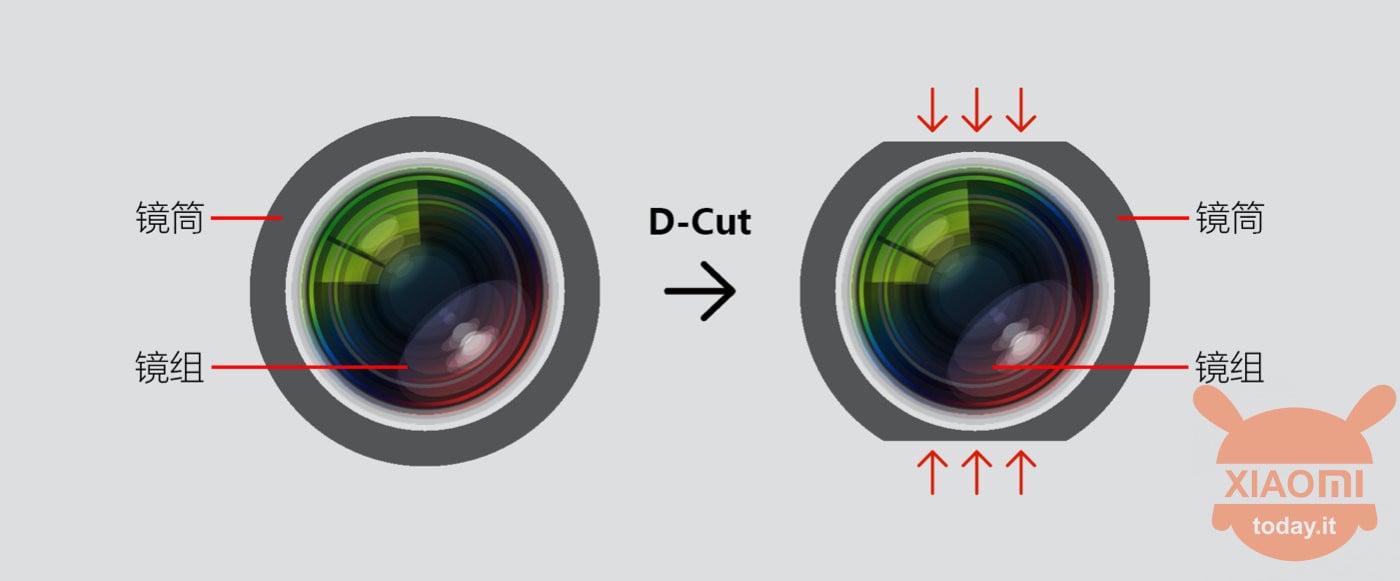
Finally, the periscope lens of the Xiaomi Mi 10 Youth Edition uses D-Cut technology to further decrease the thickness of the lens. Compared to other smartphones on the market, Xiaomi's device could therefore be the one with the thinnest periscope zoom.
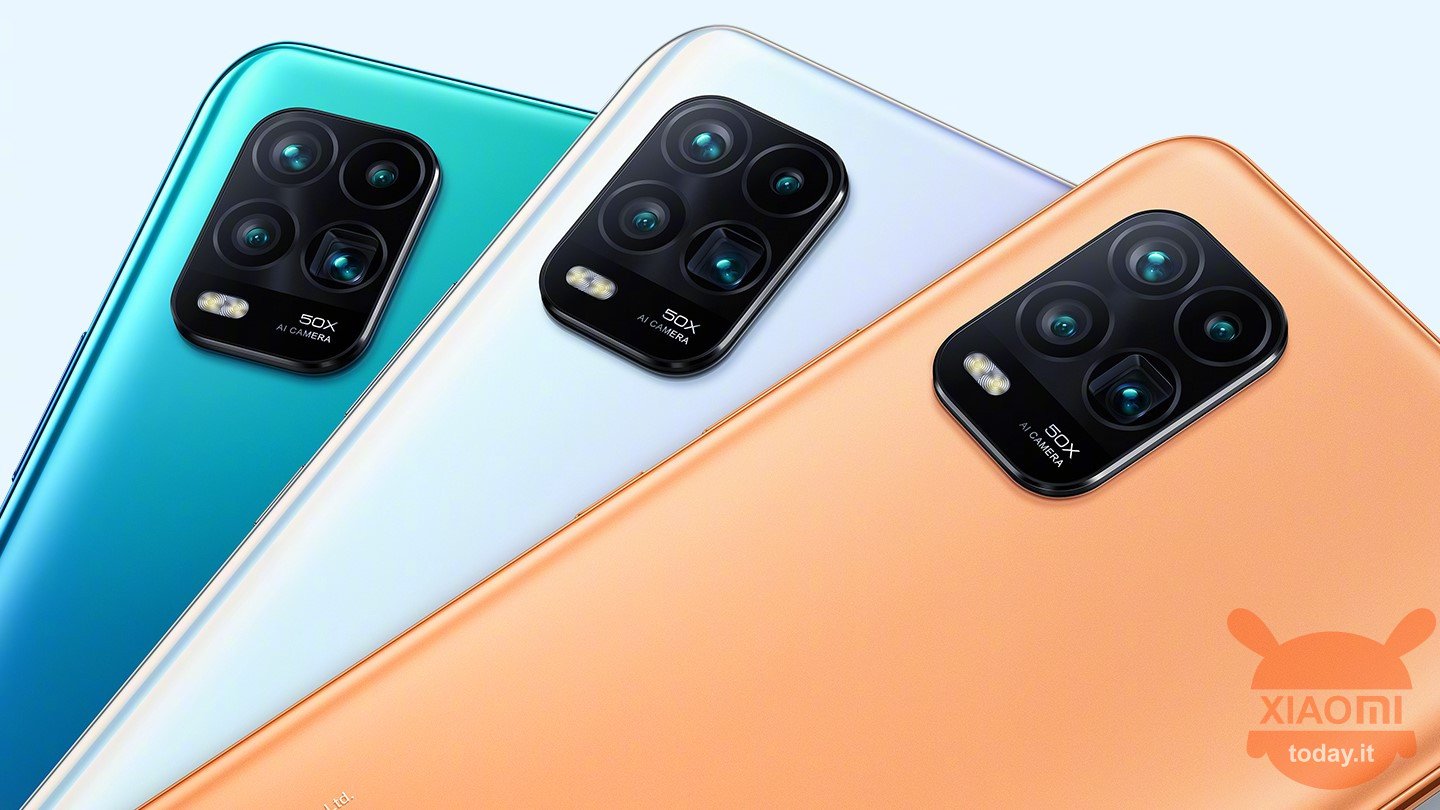
What can I say, Xiaomi seems to have outdone itself with the Mi 10 Youth Edition, bringing some of the most advanced technologies in the photographic field to a medium range. Unfortunately, however, this device is dedicated to the Chinese market, so unless you import it, you will not be able to enjoy it.
But what do you think of the Mi 10 Youth? Would you like to have the same features on board the Mi 10 Lite presented globally? Let us know in the comments section below!










theoretically as it might not come to us, since I'm very interested in the zoom factor to shoot distant subjects (e.g. footballers from the stands) could this solution give better results than the MI10PRO optics? I'm talking only about the photographic part of course
or compare with the MI10 LITE Zoom edition that we will see instead.
Excellent solution. It is the link between a camera and a smartphone. The smartphone could truly replace a camera.